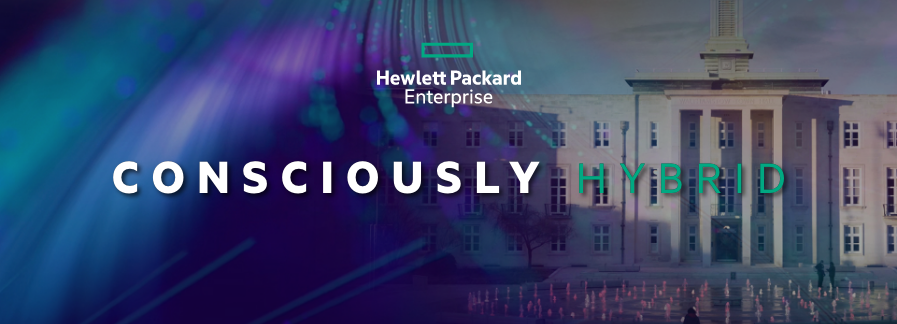
In the past 12 months, we’ve been exploring cloud transformation across the public sector. We’ve travelled the UK interviewing the technologists driving change to understand the viability of the 'cloud first' policy and its subsequent challenges, writes Russell Macdonald, HPE CTO of public sector and hybrid cloud
A topic that came up time and time again was the disparity and confusion in the definition of cloud and the perception of the policy. When interviewing for our documentary series, Consciously Hybrid, cloud was used interchangeably by many technologists and organisations. The National Institute of Standards and Technology (NIST) defines "cloud computing" as "a model for enabling ubiquitous, convenient, on-demand network access to a shared pool of configurable computing resources (e.g. networks, servers, storage, applications and services) that can be rapidly provisioned and released with minimal management effort or service provider interaction".
NIST defines ‘public cloud’ as one of four deployment models alongside community cloud, hybrid cloud, private cloud. While NIST is a US Government definition it is referenced by the UK Government in its cloud first policy. However, it does not set the standards for the UK. Despite the widely adopted definition which incorporates multiple options for cloud computing, the UK Government specifically defines cloud first as public cloud further contributing to confusion in the term itself.
The distinction between public cloud, hyperscale cloud, hybrid cloud, private cloud has, in some cases, led to organisations finding themselves caught in-between strategies, platforms, operating models and funding paths.
The cloud first policy arguably, reframed the meaning of cloud from a technology choice for individual departments to a matter of pan-government policy. Cloud should be considered an experience, or a way to consume technology. A technology strategy should therefore still be based on the fundamentals of putting the right workloads, in the right place, for the right reason. This could be on-premises, private cloud, the edge, multi-cloud and/or the public cloud.
Cloud Computing is an evolution of IT in general. The focus should therefore shift to ‘how’ workloads are modernised in terms of cloud native design, as opposed to just considering ‘where’ workloads are migrated. In the last decade, the answer to ‘where’ has been public cloud. This shift in thinking is critical to deliver on the digital government agenda moving forwards.
With this in mind, we spoke to Paul Neville during his time as director of digital and ICT at the London Borough of Waltham Forest, to understand his perception of ‘cloud’ and the resulting approach to transformation.
Paul’s definition was in line with the cloud first policy, perceiving public cloud as the answer to transformation woes. With limited digital skills and budget, the borough had been forced into a cycle of making short term value decisions rather than the long term impact, or evolution of the borough and its digital strategy. Couple this with citizens’ digital expectations rising, the borough had reached a critical moment in which it needed to transform to serve their requirements and prepare for the future.
Taking a consciously hybrid approach
The borough identified public cloud as a key enabler to modernise its legacy technology by initially lifting and shifting its ageing workloads and applications. To reduce risk and maintain cost efficiency, the borough invested a significant amount of time in learning to better understand cloud technologies and the value they can provide. Taking the time to understand what cloud means to them enabled them upskill in-house in a uniform manner with a united cloud definition.
Paul explained: “In order to scale, we knew we would need to explore and invest in cloud technology. However, we do understand that not all of our data and workloads are appropriate for migration.
"Our on-premises data centre allows us to keep some information where it operates best and provides a replica data centre for disaster recovery. We’ve taken a hybrid approach on our journey to the cloud so we can implement and exploit the benefits of cloud, whilst ensuring little to no disruption to the citizen experience.”
All too often technologists consider cloud adoption as predefined, yes or no option – either full scale public cloud adoption or not. This has been perpetuated by the cloud first policy, driving the use of public cloud specifically. Despite paving the public cloud path, the policy offers little guidance in how to get there, how to deal with legacy workloads, edge cases and sensitive data. All of which our research suggests is not, and may never be, suitable for public cloud environments.
A steadfast public cloud narrative has reinforced biases that public cloud is ‘good’, leading people to believe that everything else is ‘bad’ or the ‘old way of doing things’.
The lack of ubiquitous definition of cloud contributes to this. Public cloud is only one instantiation of modern cloud native technology and other options are available. A consciously hybrid approach recognises the value that each of those options brings in a pragmatic and strategic way.
We believe it is time to consider a more conscious path to cloud transformation – to be open to the opportunities and options that cloud and a hybrid approach offers.
We continue to explore cloud transformation and sharing the varying strategies and approaches public sector technologists are taking. If you’d like to participate or share your views, reach out or join the conversation with #ConsciouslyHybrid.
Hear more from Paul Neville
Read the Cloud Strategy Report
Watch the full documentary


